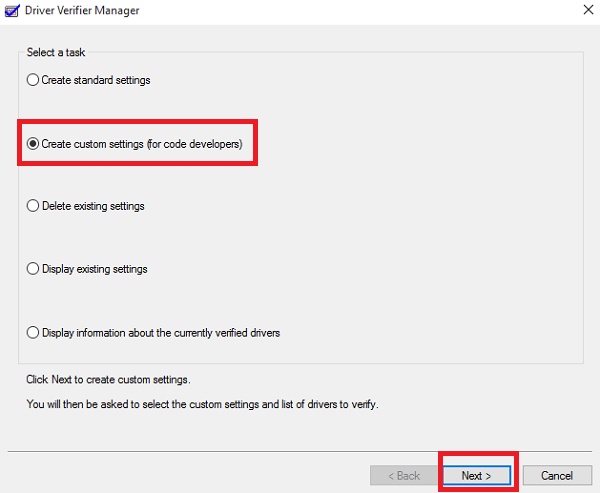
- #How to run driver verifier windows 10 drivers#
- #How to run driver verifier windows 10 update#
- #How to run driver verifier windows 10 driver#
- #How to run driver verifier windows 10 windows 10#
- #How to run driver verifier windows 10 software#
Type verifier at the prompt and then press Enter. On Windows 10, right-click the Start button and select “Windows PowerShell (Admin).” To do so, open a Command Prompt or PowerShell window as Administrator. If you really want to run this tool-and we’re warning you, you probably shouldn’t-you can. You can restore from this point if you experience a serious problem. Warning: Before running this tool, we recommend creating a System Restore point.
#How to run driver verifier windows 10 driver#
If you do manage to identify a bad driver causing you problems, all you can do is try another version of the device driver and hope the driver issue is fixed-or remove the associated hardware device from your PC. Both are better uses of your time than messing around with Driver Verifier. But you could just as easily roll back the driver or perform a System Restore.
#How to run driver verifier windows 10 update#
If you did recently update a particular driver and you’re having problems, that driver could be the cause. Second, you can investigate the reason for the original BSOD that started the whole mess, and it will likely lead you to the faulty driver anyway if there is one. A system error is more likely to be caused by failing hardware, malware, or operating system corruption than a buggy device driver. First, it’s a bit of a stretch in this age of well-tested drivers. There are two problems with that, though. This driver is potentially the driver that’s causing other issues on your system. For example, if you run Driver Verifier and see a blue screen error message, that BSOD may tell you the file name of the driver, which in turn tells you which driver caused the crash. If you are having blue-screen crashes and other system problems and you suspect a buggy driver may be the problem, you could run Driver Verifier for more information. RELATED: Everything You Need To Know About the Blue Screen of Death When You Might Want to Run Driver Verifier (Maybe) You can try restarting in Safe Mode and disabling Driver Verifier. If your Driver Verifier settings cause a blue screen of death every time your PC boots, you may be unable to boot normally. Microsoft’s documentation says you should not run this tool on your regular computer, saying “you should only run Driver Verifier on test computers, or computers you are testing and debugging.” It’s not meant as a tool for helping regular users test driver problems on their production systems. If it finds a driver problem, you’ll see a blue screen of death. That kind of rigorous testing almost certainly will find some issues with the driver, but those are unlikely to cause any real problems in the regular, day-to-day use of your computer.ĭriver Verifier can also cause Windows to crash. Even if it uncovers problems, the whole point of Driver Verifier is to stress the drivers. If your computer is running fine already, there’s no reason to run Driver Verifier-unless you’re developing a driver.
#How to run driver verifier windows 10 drivers#
There’s a good chance Driver Verifier will inform you that you have no unsigned drivers on your system if you do so. When you run Driver Verifier, you can ask it only to test unsigned drivers. These signed drivers have gone through Windows Hardware Quality Labs (WHQL) testing, and they should be pretty stable.
#How to run driver verifier windows 10 windows 10#
Modern 64-bit versions of Windows 10 require signed drivers. On a modern Windows system, you’re almost certainly already using drivers that have been verified and signed. Your PC’s Drivers Are Probably Well-Tested It doesn’t stress the hardware itself, so it may not find any problems even if you have a hardware component that’s failing.

#How to run driver verifier windows 10 software#
This tool only stress tests the device driver software itself.

While this is a useful tool for developers, you almost certainly don’t want to use it yourself. Driver Verifier also has tests that can check for memory leaks, security vulnerabilities, and other issues.

Driver Verifier can cause memory requests to randomly fail to check if the driver works properly in low resource usage situations. For example, Driver Verifier can allocate most memory requests for the driver from a select pool of memory and monitor that memory for issues. The tool helps developers find driver problems and fix them.ĭriver Verifier can perform a variety of tests, which Microsoft lists on its site. As Microsoft’s developer documentation notes, Driver Verifier is a helpful tool for developers who are creating and testing device drivers.


 0 kommentar(er)
0 kommentar(er)
